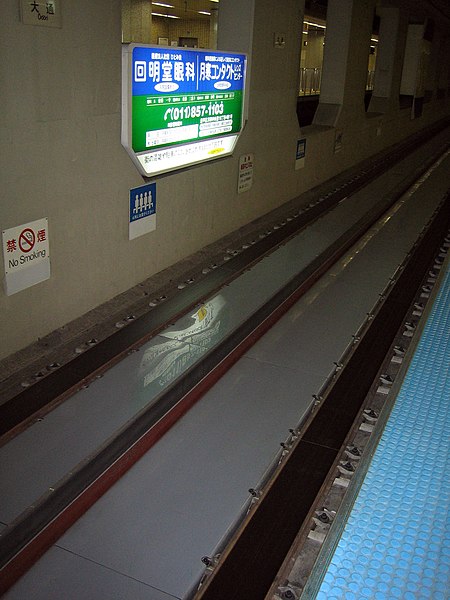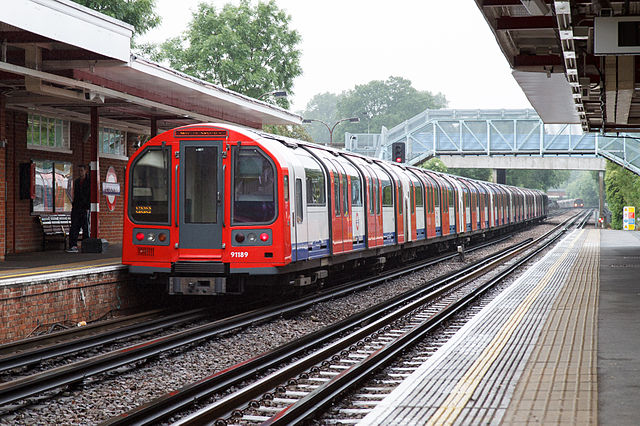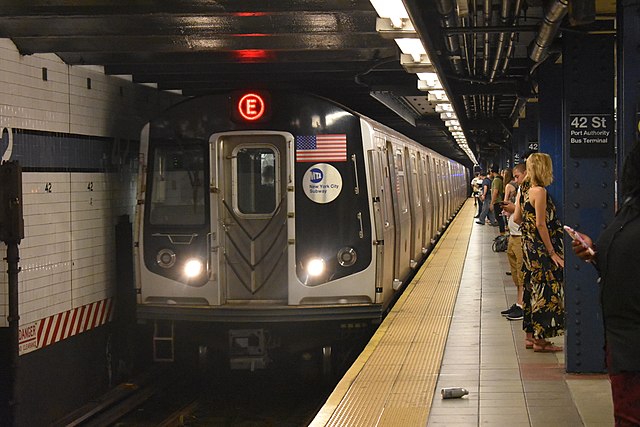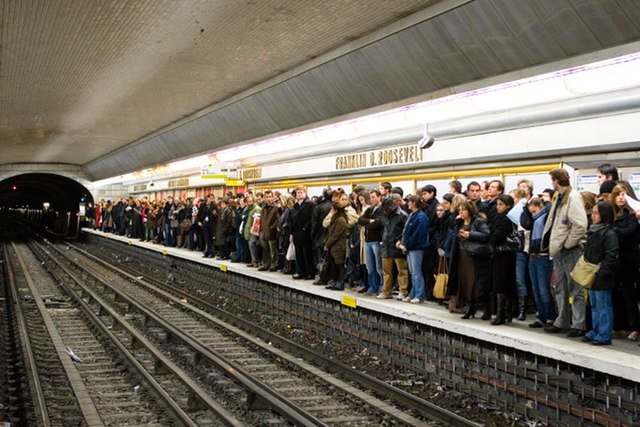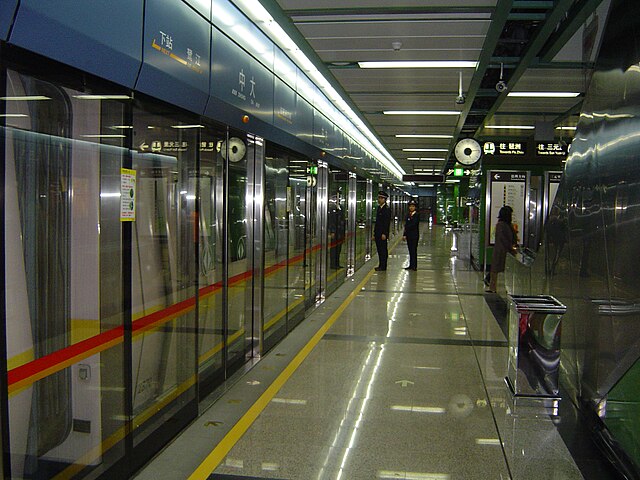A rubber-tyred metro or rubber-tired metro is a form of rapid transit system that uses a mix of road and rail technology. The vehicles have wheels with rubber tires that run on rolling pads inside guide bars for traction, as well as traditional railway steel wheels with deep flanges on steel tracks for guidance through conventional switches as well as guidance in case a tyre fails. Most rubber-tyred trains are purpose-built and designed for the system on which they operate. Guided buses are sometimes referred to as 'trams on tyres', and compared to rubber-tyred metros.
5000 series central rail-guided rubber-tyred rolling stock operated by Sapporo City Transportation Bureau, Japan, and built by Kawasaki Heavy Industries Rolling Stock Company
VAL tracks on the Lille Metro
Sapporo Subway guide rail and flat steel roll ways
Rapid transit or mass rapid transit (MRT), also known as metro, is a type of high-capacity public transport that is generally built in urban areas. A rapid transit system that primarily or traditionally runs below the surface may be called a subway, tube, or underground. Unlike buses or trams, rapid transit systems are railways, usually electric, that operate on an exclusive right-of-way, which cannot be accessed by pedestrians or other vehicles. They are often grade-separated in tunnels or on elevated railways.
The London Underground is the world's first and oldest rapid transit system.
The New York City Subway is the world's largest single-operator rapid transit system by number of metro stations, at 472.
A crowded Paris Métro average station platform in 2007
A station of the Guangzhou Metro in 2005



